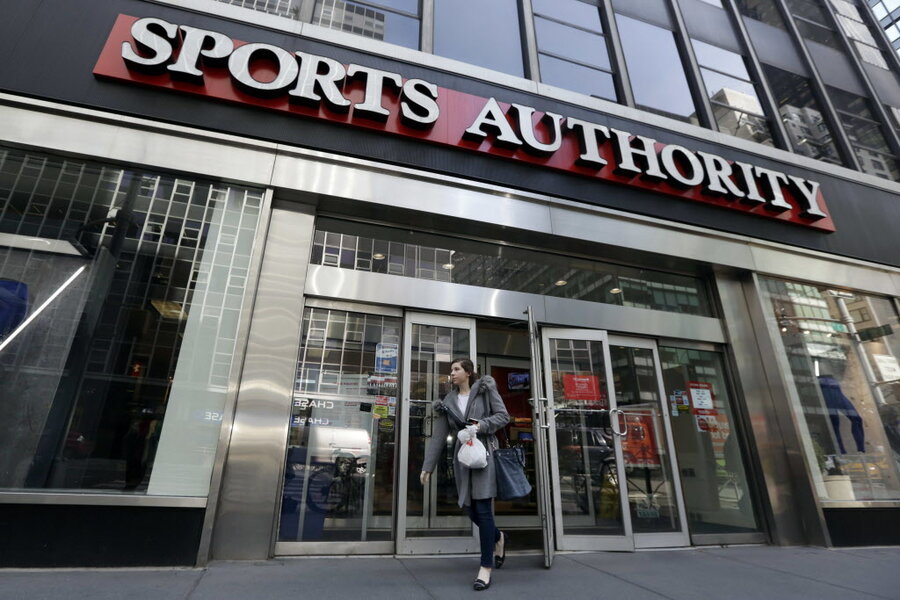Why has Sports Authority fallen on tough times?
Loading...
Sports Authority may have reached the end of the line. After declaring bankruptcy earlier this year, the sporting goods retailer is choosing to liquidate, rather than restructure its finances, a move that could mean it will close all of its stores.
"It has become apparent that the debtors will not reorganize under a plan but instead will pursue a sale," Sports Authority’s lawyer, Robert Klyman, said in court documents filed last week.
In the sale, which will take place May 16, it is possible that buyers who take charge of Sports Authority’s assets could keep some of the chain’s stores open. But in another scenario, the majority of Sports Authority’s 450 locations nationwide could be closed. Sports Authority employs approximately 15,000 workers in 41 states.
Sports Authority cited the growth online sales as a major reason for its financial problems. But an influx of specialty competitors into a space the retailer used to occupy with just a handful of other companies may also be to blame.
Once one of the largest sports retail chains in the country, Sports Authority has now slipped behind outlets like Dick’s Sporting Goods and REI. These chains have positioned themselves more successfully in the market through establishing strong relationships with their suppliers, developing the leverage to keep prices low that their competitors have had difficulty matching, Rory Masterson, an industry analyst at IBISWorld, told the Los Angeles Times in April. They've also adapted more sucessfully to the online marketplace. Online sales at Dick’s climbed at a compounded annual rate of 39 percent from 2010 to 2015.
While Sports Authority may be faltering, the sporting goods industry as a whole is growing. It accounts for an estimated $150 billion per year globally. In 2014, the most recent year available for figures, the industry was worth $63.7 billion in the United States, an increase of 24 percent since 2009 and a jump of 2 percent from the year before.
Sports Authority faces tough competition from traditional sports retail outlets, yet its financial struggles point to the increased diversification of the sports retail market. A wide array of more specialized competitors have entered the field, providing both traditional sports garments and "athleisure", or casual wear inspired by workout clothing that has exploded in popularity over the past few years.
Consumers now have a plethora of options, from $90 yoga pants at Lululemon to the discount workout wear for sale at Target and Wal-Mart. In addition to competing with each other to sell athletic shoes and hiking gear, traditional sporting goods stores have to compete with clothing brands like Gap and Abercrombie for a piece of the athleisure pie.
Sports Authority lost an estimated $256 million in 2015, but it isn’t the only sports retailer brought down by big-box stores and online sales cutting into its territory. In late April, Sports Chalet, a mid-size sports retailer based in California, announced that it would be closing all of its 47 locations.
Sports Authority has been facing financial trouble for the past several years. The retailer assumed its present size and shape through a series of mergers that began in 1997 and was ultimately bought by a hedge fund in 2006. These mergers and acquisitions expanded the company’s scope, but also introduced a burden of debt that the company has struggled to repay. In January, Sports Authority failed to make a $20 million debt payment.
In March, the company filed for Chapter 11 bankruptcy and planned to close 140 stores and two distribution centers as part of the move. But Sports Authority holds $1.1 billion in debt and assets estimated at $1 billion, amounts that make it difficult for the company to restructure.






